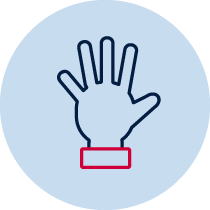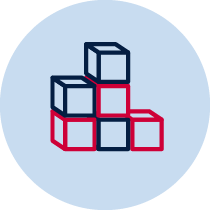Position – Ninja warriors course
 |
 |
 |
 |
 |
 |
| Practical | Build and make | Resource required | Verbal recording | Take photo | Collaborative |
Measurement and geometry – position
- describes mathematical situations and methods using everyday and some mathematical language, actions, materials, diagrams and symbols MA1-1WM
- uses objects, diagrams and technology to explore mathematical problems MA1-2WM
- supports conclusions by explaining or demonstrating how answers were obtained MA1-3WM
- represents and describes the positions of objects in everyday situations and on maps MA1-16MG
Content
Position 1
Give and follow directions to familiar locations (ACMMG023)
- use amounts of turn (full and half) to describe direction (communicating)
- give and follow simple directions using a diagram or description (communicating)
- use a diagram to give simple directions (communicating)
Position 2
Interpret simple maps of familiar locations and identify the relative positions of key features (ACMMG044)
Linked syllabus outcome
- manipulates, sorts, represents, describes and explores two-dimensional shapes, including quadrilaterals, pentagons, hexagons and octagons MA1-15MG
Two- dimensional space 2
Identify and describe half-turns and quarter-turns (ACMMG046)
National Numeracy Learning Progression mapping to the NSW mathematics syllabus
When working towards the outcome MA1-16MG the sub-elements (and levels) of Positioning and locating (PoL2-PoL3) describe observable behaviours that can aid teachers in making evidence-based decisions about student development and future learning.
Materials
- paper and pencils
- map
- equipment for example 2 hoops, 1 cone, 1 skipping rope and 2 bean bags per group
- optional – recording device
Teacher instructions
The purpose of this task is to gauge students' understanding of position concepts such as:
- use amounts of turn (full and half) to describe direction
- give and follow simple directions using a diagram or description
- use a diagram to give simple directions
- interpret simple maps of familiar locations
- identify the relative positions of key features on a map
In groups, provide students with the equipment, map, resources to write instructions and an electronic device (optional) to complete the ninja warrior course task. Using the map of the ninja warrior course, students set up the course and design a set of instructions that describe how to go through their course. Students write the instructions, record the course on the map and may record a video/photo/audio-recording of the instructions. Students may include:
- to the left of something
- to the right of something
- between something
- make a quarter-turn (clockwise or anticlockwise)
- make a half turn (clockwise or anticlockwise)
- make a full turn (clockwise or anticlockwise)
For example use command cards, start at the hoop, step into the first hoop and do a full-turn clockwise, jump into the second hoop and do a quarter-turn anti-clockwise, walk forward, do a quarter turn clockwise, walk to the left of the cone, do a quarter-turn clockwise, run to the right of the skipping rope, walk between the bean bags, do half-turn jump anti-clockwise.
Students swap their instructions with another group. This provides an opportunity for students to check the effectiveness of their instructions. It also allows the teacher to observe how students interpret and follow instructions. Students show the original group their attempt at following the instructions and/or video. Students provide verbal and/or written feedback on how the other group can refine and improve their instructions.
Reflecting on your attempt at following the instructions compared to what the course was supposed to look like, how do you think this group can refine and improve their instructions? What would have made it clearer for you? Is there a step that needs to be more specific? How can this group make it more specific?
Students should be able to communicate using the following language: full-turn, half-turn, quarter-turn, clockwise, anti-clockwise, left, right, location, map, path, turn.
Student instructions
Work in groups and use this equipment to make a short obstacle, or ninja warrior, course.
Write a set of instructions describing how to go through your course.
Think about the types of instructions you may include.
Design your course using the map and write your instructions. Show your course on the map. Photograph/audio-record/video your instructions.
Swap your instructions with another group.
Provide quality feedback to the other group that will help them to refine and improve their instructions.
Refine your instructions in response to their effectiveness and feedback from your peers.
Possible areas for further exploration?
Mathematical language to describe half-turns and quarter-turns, clockwise, anti-clockwise
Students’ ability to give and follow directions
Which positional words are students using?
Which positional words are students not using?
Do students use gestures? When? How?
Where to next?
- Use command cards to create the ninja warrior course using a grid
- Students create their own ninja warrior course using their own selected range of equipment and repeat the process above
- Watch a video of a student completing a ninja warrior course and students write instructions to match the video
Please note:
Syllabus outcomes and content descriptors from Mathematics K-10 Syllabus © NSW Education Standards Authority (NESA) for and on behalf of the Crown in right of the State of New South Wales, 2012